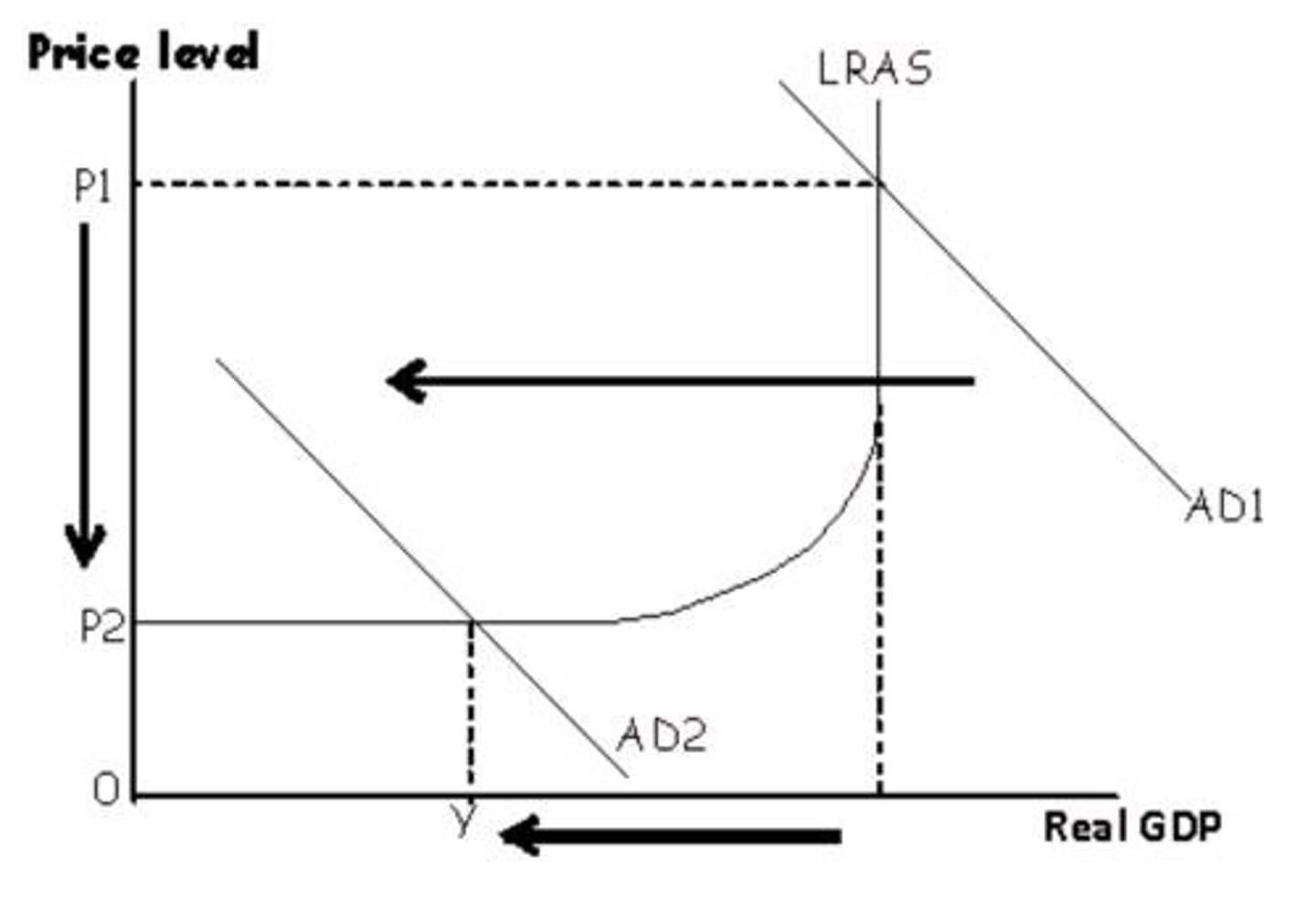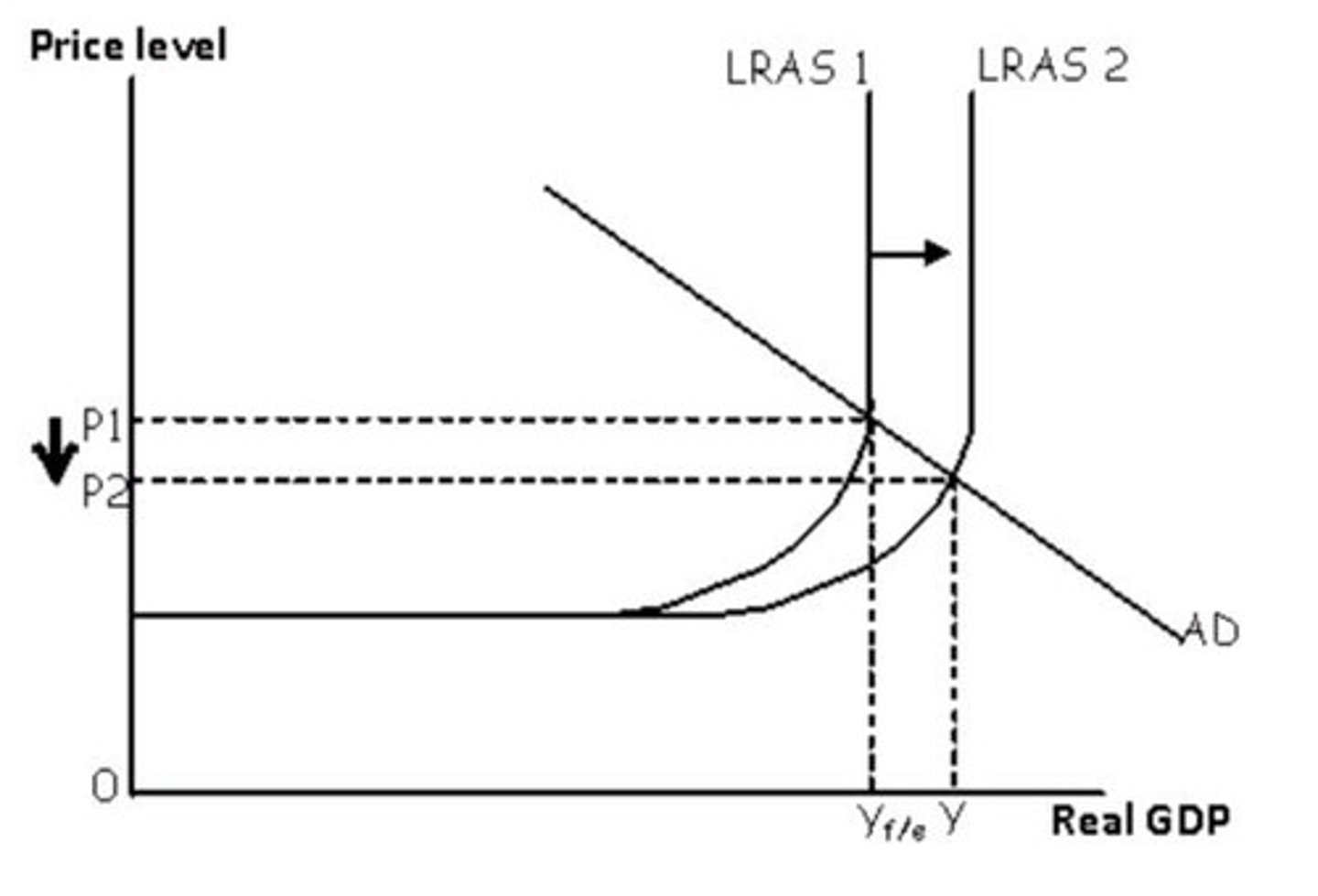Inflation and Deflation (Causes)
1/48
There's no tags or description
Looks like no tags are added yet.
Name | Mastery | Learn | Test | Matching | Spaced |
|---|
No study sessions yet.
49 Terms
Deflation
Sustained decrease in average price levels.
Demand-side deflation
Fall in aggregate demand shifts AD curve left.

Supply-side deflation
Increase in economic capacity shifts LRAS curve right.

Bad deflation
Negative effects from falling aggregate demand.
Good deflation
Positive effects from increased economic capacity.
Disinflation
Decrease in the rate of inflation.
Sticky wages
Resistance to nominal wage cuts by workers.
Real balance effect
Price level fall increases consumption.
Deflationary pressures
Economic conditions leading to potential deflation.
Real value of debt
Debt's worth increases during deflation.
Increased real interest rates
Real rates rise when nominal rates are zero.
Real wage unemployment
Unemployment caused by rising real wages.
Deflationary spiral
Cycle where deflation causes further deflation.
Aggregate demand (AD)
Total demand for goods/services in economy.
Long-run aggregate supply (LRAS)
Total output an economy can produce sustainably.
Short-run aggregate supply (SRAS)
Total output firms produce in the short term.
Consumer spending
Expenditure by households on goods/services.
Economic growth
Increase in a country's output over time.
Nominal wage cuts
Reduction in workers' money wages.
Japan's deflationary experience
Prolonged deflation in Japan during the 90s.

Price level
Average of current prices across the entire spectrum.
Luxury goods
Non-essential items consumers delay purchasing.
Cost reductions
Decreases in production costs leading to lower prices.
Deflationary expectations
Belief prices will fall in the future.
Deflationary Spiral
A cycle where falling prices lead to reduced spending.
Deflationary Expectations
Belief that prices will decline in the future.
Real Interest Rate
Nominal interest rate adjusted for inflation.
Aggregate Demand
Total demand for goods and services in an economy.
Real Value of Debt
Increased purchasing power of debt during deflation.
Supply Side Deflation
Deflation resulting from increased production efficiency.
Long-Run Aggregate Supply (LRAS)
Represents potential output in the economy over time.
International Competitiveness
Ability of a country to sell goods abroad.
Reflationary Policies
Government measures to counteract deflation.
Expansionary Fiscal Policy
Increased government spending and reduced taxes.
Quantitative Easing (QE)
Central Bank buys bonds to increase money supply.
Liquidity Trap
Monetary policy ineffective at low interest rates.
Helicopter Drop
Direct money distribution to consumers to stimulate spending.
Announcement Effects
Market reactions to public policy statements.
Devaluation
Reduction of currency value to boost exports.
Purchasing Power
Value of money in terms of goods and services.
Consumer Spending
Expenditures by households on goods and services.
Positive Multiplier Effect
Increased spending leads to further economic growth.
Deferred Spending
Postponement of purchases due to expected price drops.
Real Incomes
Income adjusted for inflation, reflecting true purchasing power.
Economic Agents
Individuals or entities making economic decisions.
PED of Exports
Price elasticity of demand for exported goods.
Competitive Devaluation
Countries lowering currency value to enhance trade.
Short Periods of Deflation
Temporary deflation that may not harm the economy.
Costs of Deflation
Negative impacts such as increased debt burden.